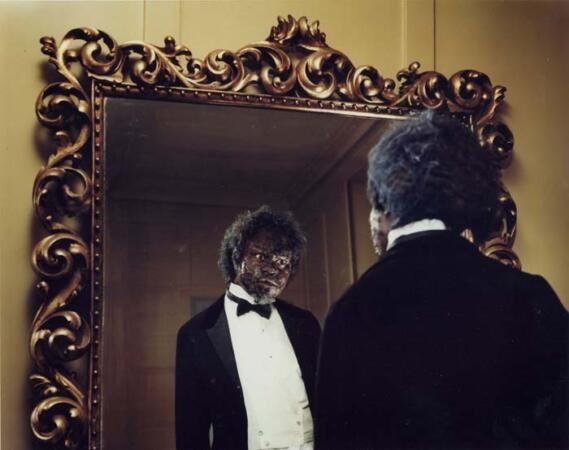
It’s a debate/discussion we continue to have on this blog (and offline), especially as some actors and filmmakers of African descent have, over the years, voiced their opposition to being referred to as “black actors” or “black filmmakers” eschewing whatever those classifications might mean to them, as informed by the industry in which they work: What is “blackness?” “Black art”? “Black film?” Is there an actual “black aesthetic” to be identified across all art forms? A “Burden of representation” for black artists to carry or embrace? Etc…
Those who’ve been following this blog since inception know that these are questions that frequently arise and that we continue to tackle, encouraging others to do the same; not necessarily to reach some consensus on the matter, but rather to realize that there is a variance in perspectives among us, as there should be (not some limited, monolithic understanding), and, in turn, learn to embrace and appreciate those differences that are indeed personal.
As we come across them, we continue to post some of those personal points of view expressed by other artists of African descent from all over the world, and hopefully showcase the wide range of our experiences, and how those experiences manifest themselves in, and influence the art that we individually create.
I’ll from henceforth refer to it as the “Defining Blackness Series.”
Yinka Shonibare is a 54-year old British-Nigerian conceptual artist, who explores issues of race and class through a range of media that includes sculpture, painting, photography, and installation art. At the age of 19, he became seriously ill with a rare viral infection which attacked his spine and left him temporarily paralyzed. His theatrically exuberant work, with its signature use of headless mannequins and African fabrics, has been featured in museums worldwide.
The exhibitions usually include a combo of paintings, sculptures, large-scale installations, photographs and films.
Here’s a worthwhile passage from an interview with Shonibare, courtesy of the New York Times, which contributes to our never-ending discussion on how to define “black art,” a “black aesthetic,” “blackness” etc… Below, Shonibare recalls a moment of creative clarity on the matter, one that likely resembles many of your own experiences:
The seminal moment in Mr. Shonibare’s artistic formation, however, was kindled by an encounter at Byam Shaw [School of Art in London] during a period when he was “making art about Perestroika.”
One day his tutor confronted him . “Why are you making work about Perestroika?” the tutor, a white Briton, asked. “You are African, aren’t you? Why don’t you make authentic African art?”
At first Mr. Shonibare was taken aback. “I tried to figure out what he meant by authentic African art,” he said. “I didn’t know how to be authentic. What would I do if I was being authentic?”
Born in England in 1962 when his father was studying law there, Mr. Shonibare was raised biculturally. His family returned to Nigeria when he was 3 but kept a house in South London, where he spent summers. Mr. Shonibare grew up in Lagos singing “London Bridges” and watching “Sesame Street.” He spoke Yoruba at home, English at school. He felt privileged, not disadvantaged.
“I didn’t feel inferior to anyone,” he said, adding, with a laugh, “If anything, I felt they were inferior to me.”
But the tutor saw him as “someone of African origin, and there are things associated with that,” Mr. Shonibare said.
“I should have actually understood all along that there is a way in which one is perceived, and there’s no getting away from it. And I realized that if I didn’t deal with it, I would just be described forever as a black artist who doesn’t make work about being black.”
Right then, Mr. Shonibare said, he found his artistic raison d’être.
“I realized what I’d really have to deal with was the construction of stereotypes, and that’s what my work would be about.” […] “My tutor wanted me to be pure African,” Mr. Shonibare said “I wanted to show I live in a world which is vast and take in other influences, in the way that any white artist has been able to do for centuries.”
And I’d add that this is a point of contention for many – as a black artist (in the case of this blog, a black filmmaker, writer, actor, etc) being able to create just as freely, without the so-called “burden of representation” white artists don’t have to feel loaded with; although some have embraced that so-called “burden,” and don’t see it as a burden at all.
So we continue to debate these issues.
Here is Shonibare discussing his background, his “post-racial” work, and his disability, on PBS’ “Art 21,” a television series on contemporary art (the first 2 minutes of the clip).

